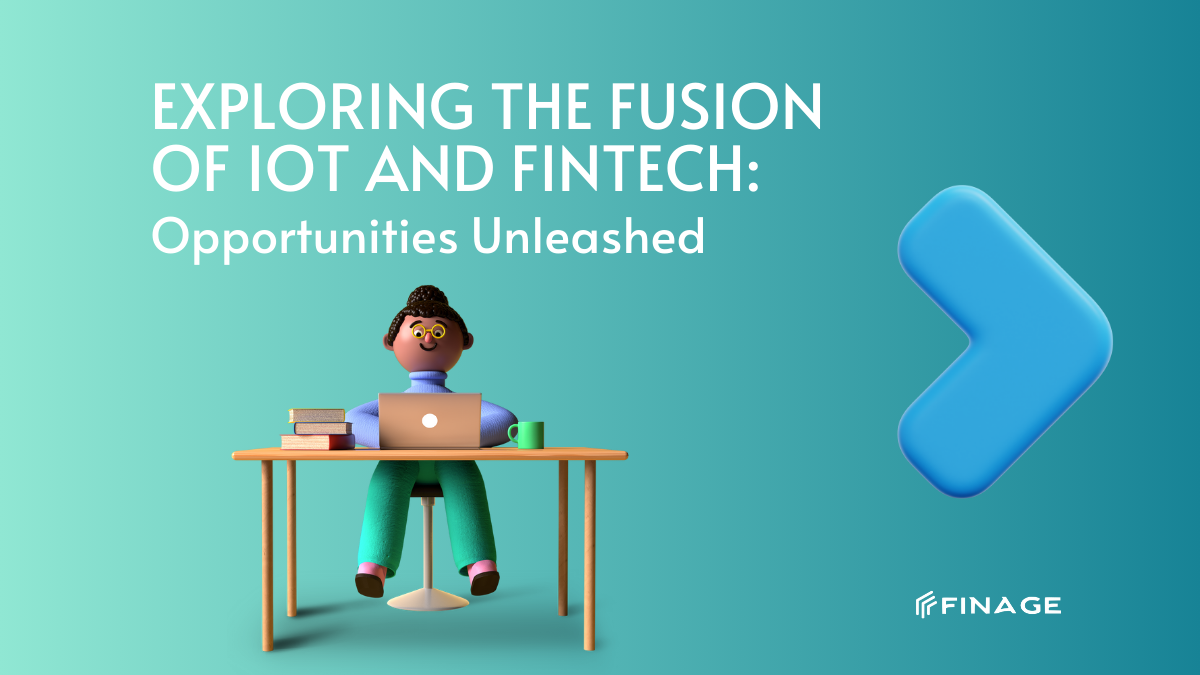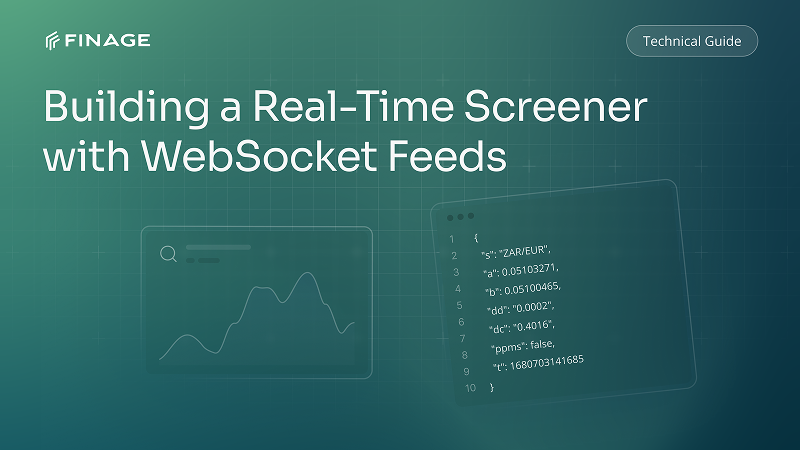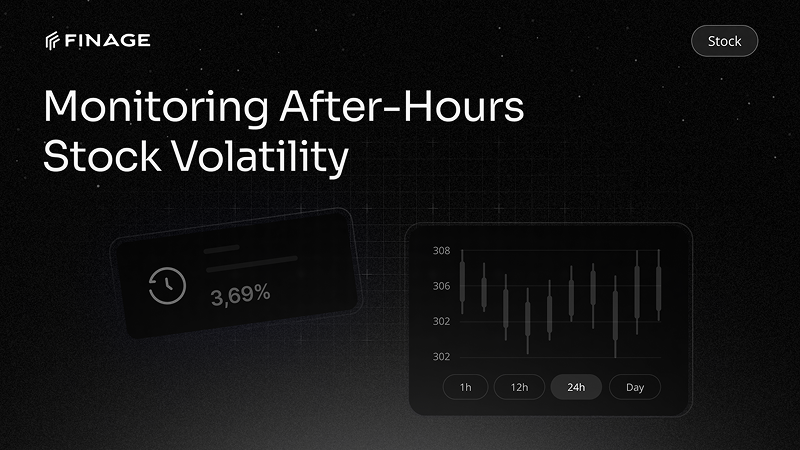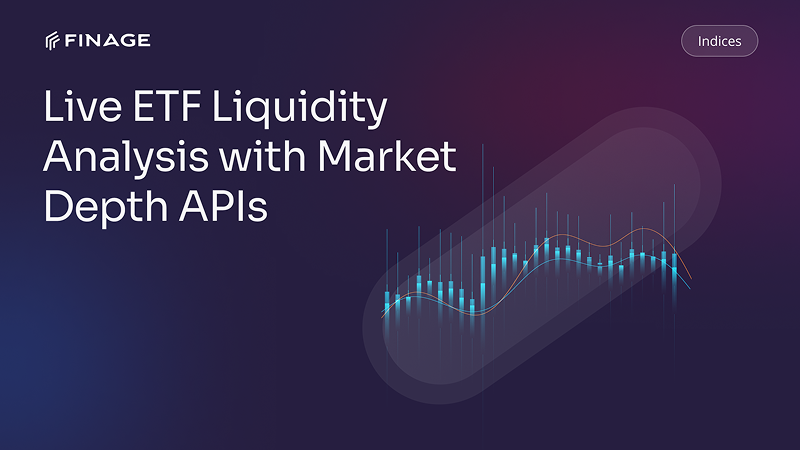Exploring the Fusion of IoT and FinTech: Opportunities Unleashed
10 min read • August 27, 2024

Introduction
The convergence of the Internet of Things (IoT) and Financial Technology (FinTech) is creating new possibilities in the financial services sector. As these two innovative fields merge, they are reshaping how businesses operate, how consumers interact with financial services, and how data is collected and utilized. The fusion of IoT and FinTech is unlocking a myriad of opportunities, from real-time payments and enhanced security to personalized financial services and data-driven decision-making. This blog post delves into the intersection of IoT and FinTech, the transformative opportunities it presents, and what the future holds for this powerful combination.
Contents
- Understanding IoT and FinTech
- What is IoT
- What is FinTech?
- The Intersection of IoT and FinTech
- Key Opportunities Unleashed by IoT and FinTech Fusion
- Real-time Payments and Transactions
- Enhanced security and fraud prevention
- Personalized Financial Services
- Data-Driven Decision Making
- Impact on Financial Services and Consumer Experience
- Smart Wallets and Connected Devices
- IoT in Insurance: Usage-Based Models
- Streamlining Supply Chain Finance
- Revolutionizing Banking Infrastructure
- Challenges and Risks in the IoT-FinTech Ecosystem
- Data Privacy and Security Concerns
- Regulatory and Compliance Issues
- Interoperability and Integration Challenges
- Managing the Complexity of IoT Networks
- The Future of IoT and FinTech Integration
- AI and IoT in FinTech Applications
- Blockchain and IoT for Secure Transactions
- Smart Contracts and Automated Financial Services
- Sustainability and Green Finance
- Final Thoughts
Understanding IoT and FinTech
What is IoT?
The Internet of Things (IoT) refers to the network of physical devices, vehicles, appliances, and other objects embedded with sensors, software, and connectivity to exchange data with other devices and systems over the Internet. IoT enables these devices to collect and transmit data, making them "smart" and allowing for real-time monitoring, control, and automation.
Connectivity and Communication: IoT devices are connected to the internet, enabling them to communicate with each other and with centralized systems, creating a vast network of interconnected devices.
Data Generation: IoT devices generate massive amounts of data, which can be analyzed to gain insights, optimize processes, and enhance decision-making.
What is FinTech?
Financial Technology, or FinTech, refers to the use of technology to improve and automate financial services. FinTech encompasses a wide range of innovations, including digital payments, online banking, peer-to-peer lending, robo-advisors, and blockchain technology.
Innovation in Finance: FinTech is driving innovation in the financial industry by introducing new business models, enhancing customer experiences, and improving the efficiency of financial services.
Digital Transformation: FinTech is at the forefront of the digital transformation of finance, making financial services more accessible, convenient, and personalized for consumers and businesses.
The Intersection of IoT and FinTech
The fusion of IoT and FinTech represents a powerful combination that is transforming the financial services landscape. By integrating IoT devices with FinTech applications, businesses can unlock new opportunities for real-time data collection, automation, and enhanced customer experiences.
Connected Ecosystem: The integration of IoT and FinTech creates a connected ecosystem where financial transactions, data analytics, and decision-making are seamlessly integrated, enabling more efficient and personalized financial services.
Innovative Use Cases: The intersection of IoT and FinTech is giving rise to innovative use cases, such as real-time payments through connected devices, usage-based insurance models, and personalized financial services based on IoT data.
Key Opportunities Unleashed by IoT and FinTech Fusion
Real-Time Payments and Transactions
The integration of IoT with FinTech enables real-time payments and transactions through connected devices, creating a more seamless and efficient financial experience.
Smart Payments: IoT devices, such as smartwatches and connected cars, can facilitate real-time payments by communicating directly with payment gateways. For example, a connected car could automatically pay for tolls, fuel, and parking without the need for physical interaction.
Instant Transactions: IoT-driven FinTech solutions enable instant transactions between devices, reducing the time and effort required for traditional payment methods. This can streamline processes in various industries, such as retail, transportation, and logistics.
Enhanced Security and Fraud Prevention
IoT and FinTech can work together to enhance security and prevent fraud by leveraging real-time data and advanced analytics.
Biometric Authentication: IoT devices equipped with biometric sensors, such as fingerprint scanners and facial recognition, can provide an additional layer of security for financial transactions. This reduces the risk of unauthorized access and fraud.
Real-Time Monitoring: IoT devices can monitor transactions and account activity in real-time, detecting suspicious behavior and potential fraud. For example, if an IoT device detects an unusual transaction, it can automatically trigger an alert or block the transaction until further verification.
Personalized Financial Services
IoT data can be leveraged by FinTech applications to offer highly personalized financial services tailored to individual needs and preferences.
Behavioral Insights: IoT devices generate valuable data about consumer behavior, such as spending patterns, energy usage, and vehicle maintenance. FinTech companies can use this data to offer personalized financial products and services, such as customized insurance plans, tailored investment advice, and personalized budgeting tools.
Context-Aware Services: IoT-enabled FinTech solutions can provide context-aware financial services based on real-time data. For example, a smart thermostat could adjust a homeowner’s energy consumption based on real-time utility prices, while a connected car could offer customized financing options based on driving behavior and vehicle usage.
Data-Driven Decision Making
The fusion of IoT and FinTech enables data-driven decision-making by harnessing the power of real-time data analytics.
Predictive Analytics: IoT devices generate continuous streams of data that can be analyzed to predict future trends and behaviors. FinTech companies can use predictive analytics to offer proactive financial services, such as predicting cash flow needs for businesses or forecasting investment opportunities for consumers.
Optimized Financial Management: IoT-driven data insights can help businesses and consumers optimize their financial management by providing real-time recommendations and alerts. For example, a connected device could notify a business owner when inventory levels are low, triggering an automated order and payment process.
Impact on Financial Services and Consumer Experience
Smart Wallets and Connected Devices
The integration of IoT with FinTech is revolutionizing the concept of wallets and payment methods, making financial transactions more seamless and secure.
Digital Wallets: IoT-enabled digital wallets allow consumers to store and manage multiple payment methods on a single device, such as a smartphone or smartwatch. These wallets can be used to make payments, transfer funds, and track spending in real-time.
Connected Devices: IoT devices, such as wearables and smart home systems, can be linked to digital wallets, enabling consumers to make payments directly from their connected devices. This creates a more convenient and efficient payment experience.
IoT in Insurance: Usage-Based Models
IoT is transforming the insurance industry by enabling usage-based insurance models that are more personalized and fair.
Telematics and Auto Insurance: IoT devices, such as telematics systems, track driving behavior and vehicle usage in real-time. Insurers can use this data to offer usage-based auto insurance plans, where premiums are calculated based on actual driving behavior rather than traditional risk factors.
Health and Life Insurance: Wearable IoT devices, such as fitness trackers, monitor an individual’s health and activity levels. Insurers can use this data to offer personalized health and life insurance plans, rewarding customers for healthy behaviors with lower premiums or other incentives.
Streamlining Supply Chain Finance
The fusion of IoT and FinTech is streamlining supply chain finance by providing real-time visibility and automation across the supply chain.
Inventory Management: IoT devices can monitor inventory levels, track shipments, and manage supply chain processes in real-time. FinTech applications can use this data to optimize cash flow, reduce financing costs, and improve supplier relationships.
Automated Payments: IoT-enabled smart contracts can automate payments between supply chain participants based on predefined conditions. For example, a payment could be automatically triggered when goods are delivered and verified by IoT sensors.
Revolutionizing Banking Infrastructure
IoT is revolutionizing banking infrastructure by enabling smarter and more efficient operations.
Smart Branches: Banks are leveraging IoT to create smart branches equipped with connected devices that enhance customer experience. For example, IoT sensors can monitor foot traffic and customer wait times, allowing banks to optimize staffing levels and reduce wait times.
ATM Management: IoT devices can monitor the status of ATMs in real time, alerting banks to issues such as low cash levels or technical malfunctions. This allows for proactive maintenance and improved service availability.
Challenges and Risks in the IoT-FinTech Ecosystem
Data Privacy and Security Concerns
The integration of IoT and FinTech raises significant concerns about data privacy and security.
Data Vulnerability: IoT devices are often connected to multiple networks and systems, making them vulnerable to cyberattacks. A breach in an IoT network could expose sensitive financial data and compromise user privacy.
Regulatory Compliance: FinTech companies must comply with data protection regulations, such as GDPR and CCPA, to ensure that IoT-generated data is collected, stored, and used responsibly. Failure to comply could result in legal penalties and damage to reputation.
Regulatory and Compliance Issues
The fusion of IoT and FinTech presents regulatory challenges, as existing frameworks may not fully address the complexities of this new ecosystem.
Evolving Regulations: As IoT and FinTech technologies continue to evolve, regulators must develop new frameworks to address issues such as data ownership, liability, and cross-border data flows.
Standardization: The lack of standardization in IoT devices and protocols can create challenges for regulatory compliance and interoperability. Policymakers and industry stakeholders must work together to establish common standards and guidelines.
Interoperability and Integration Challenges
Ensuring interoperability and seamless integration between IoT devices and FinTech applications is critical for the success of this ecosystem.
Technology Compatibility: Different IoT devices may use different communication protocols, making it difficult to integrate them with FinTech platforms. This can lead to fragmentation and inefficiencies in the ecosystem.
System Integration: Integrating IoT-generated data with existing financial systems and platforms can be complex and resource-intensive. Financial institutions must invest in robust integration solutions to ensure seamless data flow and functionality.
Managing the Complexity of IoT Networks
The complexity of IoT networks presents operational challenges for FinTech companies.
Network Management: Managing a large network of IoT devices requires sophisticated monitoring and maintenance solutions. Financial institutions must ensure that their IoT networks are reliable, secure, and scalable.
Data Overload: IoT devices generate massive amounts of data, which can overwhelm traditional data processing systems. FinTech companies must invest in advanced data analytics and storage solutions to handle the volume and complexity of IoT data.
The Future of IoT and FinTech Integration
AI and IoT in FinTech Applications
The combination of AI and IoT is set to drive the next wave of innovation in FinTech.
Predictive Maintenance: AI-powered predictive maintenance solutions can analyze IoT data to predict when equipment or devices are likely to fail, enabling proactive maintenance and reducing downtime.
Personalized Recommendations: AI can analyze data from IoT devices to offer personalized financial recommendations, such as customized investment strategies, savings plans, or insurance coverage.
Blockchain and IoT for Secure Transactions
The integration of blockchain with IoT offers enhanced security and transparency for financial transactions.
Secure Data Sharing: Blockchain can provide a secure and tamper-proof platform for sharing IoT-generated data, ensuring data integrity and reducing the risk of fraud.
Smart Contracts: Blockchain-enabled smart contracts can automate and enforce financial agreements based on IoT data, reducing the need for intermediaries and improving efficiency.
Smart Contracts and Automated Financial Services
The use of smart contracts in IoT-enabled FinTech applications is transforming the way financial services are delivered.
Automated Payments: Smart contracts can automatically execute payments based on predefined conditions, such as the delivery of goods or the completion of a service. This reduces the need for manual intervention and accelerates transaction processing.
Self-Executing Insurance Policies: IoT data can trigger self-executing insurance policies, where claims are automatically processed and paid out based on real-time data, such as weather conditions or vehicle performance.
Sustainability and Green Finance
The fusion of IoT and FinTech is also driving sustainability and green finance initiatives.
Energy Efficiency: IoT devices can monitor energy consumption in real time, enabling consumers and businesses to optimize energy use and reduce costs. FinTech applications can offer financing solutions for energy-efficient technologies, such as solar panels or smart thermostats.
Carbon Footprint Tracking: IoT-enabled sensors can track and measure carbon emissions in real time, providing valuable data for carbon trading platforms and sustainability reporting.
Final Thoughts
The fusion of IoT and FinTech is unleashing a wave of innovation that is transforming the financial services industry. From real-time payments and personalized financial services to enhanced security and data-driven decision-making, the opportunities presented by this convergence are vast and varied.
However, the integration of IoT and FinTech also presents significant challenges, including data privacy concerns, regulatory issues, and the complexity of managing interconnected systems. To fully realize the potential of this fusion, financial institutions, and technology providers must address these challenges through robust security measures, regulatory compliance, and collaboration.
As the IoT and FinTech ecosystems continue to evolve, the future holds even greater promise for innovation and growth. By embracing the opportunities and navigating the challenges, businesses and consumers alike can benefit from a more connected, efficient, and personalized financial experience.
In the years ahead, the fusion of IoT and FinTech will likely drive further advancements in AI, blockchain, and smart contracts, shaping the future of finance in ways we are only beginning to imagine. For those willing to explore this frontier, the possibilities are truly limitless.
You can get your Real-Time and Historical Market Data with a free API key.
Build with us today!
Claim Your Free API Key Today
Access stock, forex and crypto market data with a free API key—no credit card required.

Stay Informed, Stay Ahead
Finage Blog: Data-Driven Insights & Ideas
Discover company news, announcements, updates, guides and more


